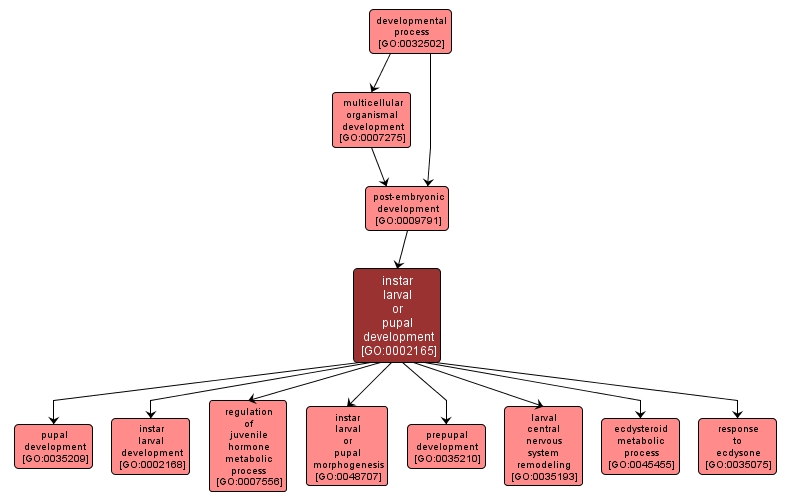GO TERM SUMMARY
|
| Name: |
instar larval or pupal development |
| Acc: |
GO:0002165 |
| Aspect: |
Biological Process |
| Desc: |
The process whose specific outcome is the progression of the instar larva or pupa over time, from its formation to the mature structure. An example of this process is found in Drosophila melanogaster. |
|

|
INTERACTIVE GO GRAPH
|














